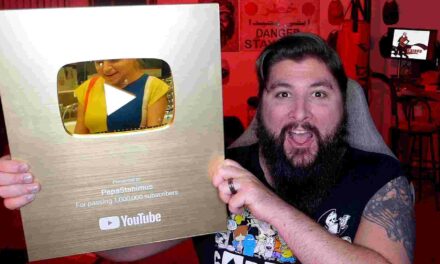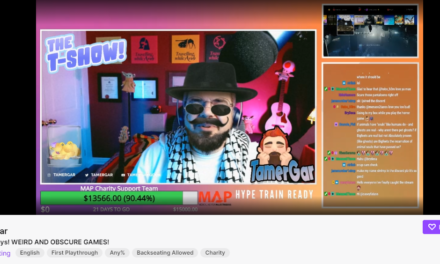
MAY 17, 2022
In this issue:
- Full Tilt: Beginnings of Course Empire
- Content Entrepreneur: Test-Guide Mastery
- Tilt Education Free Course: How To Build an Audience and Generate Revenue
full tilt
How To Start an Online Course Empire
The most profitable monetization channel for creators?
Online courses and workshops, according to The Tilt’s inaugural content entrepreneur benchmark research.
Creators who are already growing their own audiences and marketing channels are the perfect people to meet that astronomical demand for online courses. According to Closing the Gap: 2022 Online Learning Trends from Thinkific, a whopping 62% of online students were taking courses from creators with fewer than 10K social media followers in 2021.
But how does a creator get started teaching an online course? We checked in with creators and online course experts to get some secrets.
“Any time is the right time, in my opinion, especially if you have a topic that you’re passionate about and want to explore further,” says Jimmy Huynh, marketing training programs manager for Kajabi, an online learning platform.
For Christina Rozema, founder of New Wellness Perspective, the time came after she wrote an ebook to help friends and colleagues live healthier. She was listening to a podcast by Jill and Josh Stanton, who also run the Wealthy Course Creator. She realized the online course medium would be an effective way to spread her message too.
Monique Melton of Shine Bright School had been doing business and brand development coaching from home. A few years in, she thought more about the importance of Black liberation and antiracism. In 2018, Monique launched her first classes on the topic and has taught thousands since.
“You’ve got to convince yourself that you should do it,” Monique says. “Because, a lot of times, when you’re trying something new that you’ve never done before … that fear of failure can just rip you up and stall you in your process.”
How do you decide what to teach? Monique, who advises others on building online courses, says you should ask: “What are some of the most popular questions that people ask me?”
“Start with something that, if you lost your notes, you could still do it,” she says, “because then it’s going to feel like, ‘I got this. I know what I’m talking about. I can do this.’ And then you build on it. You add to it, and you go from there.”
What kind of marketing is required? According to Thinkific’s Close the Gap report, social media traffic is, by far, the top way for course creators to attract students. Some 58% of respondents say that’s a preferred method.
Christina relies on word of mouth and Facebook ads. Most of Monique’s audience comes from Instagram. To boost her visibility, she takes advantage of every feature on the platform — from stories to lives, posts to carousels. And, she says, her direct-message strategy is “award-winning.”
Sometimes potential students need a little extra push before they commit. “You have to tell people what you have,” Monique says. “If you don’t tell them, they won’t know. And then, you have to sometimes help them see how it will help them. They don’t always make that connection.”
– Sarah Lindenfeld Hall
Learn more about what type of audience you need and a few caveats to adding online courses to your business.
New Free Course From The Tilt:
Join Joe Pulizzi as he outlines the seven steps to build an audience and begin generating revenue. Learn how to find your sweet spot and content tilt. Explore the different revenue options and which may work well for you as a content entrepreneur.
This course includes Joe’s lesson, worksheets, explainer videos, and other resources – all curated into one FREE mini course.
content entrepreneur spotlight
Entrepreneur: Dave Evangelisti
Biz: Test-Guide
Tilt: Free practice tests and prep-course reviews
Primary Channel: Website (7M to 20M page views per month)
Other Channels: Twitter (178), YouTube (1.4K)
Time to First Dollar: 2 months
Rev Streams: Affiliate sales, advertising, product sales
Our Favorite Actionable Advice:
- Work on one thing at a time: Dave is a master at prioritization. He focuses on content first, then traffic, then revenue.
- Create adjacent content: Test-Guide published content about the dates for the ACT because they knew the audience searching for the dates also might want to prepare for the ACT (their content product).
- Don’t fall for “easy” ranking tips: Dave learned the hard way that sketchy backlink practices can be penalized by Google long after you stop them.
– Kimmy Gustafson
Read Dave and Test-Guide’s story.
Know a content creator who’s going full tilt? DM us. Or email [email protected].
quick talk
Caught on … Hackernoon
“Social media platforms have shifted from supporting creator individuality to commoditizing creators … to maintain their grasp on user attention … This dynamic undermines creator success and independence.” – Li Jin
things to know
Money
-
Multimillionaire tip: A creator who’s sold $5M in books online says if they were starting in 2022, they would start with a newsletter, not a website. (The Middle Finger Project)
Tilt Take: Newsletters are based on a relationship between the subscriber and you. A website is a static marketing tool. -
Lift together: When viewers saw a brand on TikTok before a TV show, TikTok found a 6% lift in aiding brand recall. If it was before a streaming show, the lift was 8%. (Social Media Today)
Tilt Take: The power of integrated viewing platforms cannot be underestimated.
Audiences
-
Scrolling and scrolling and scrolling: Forecasters think US TikTok users will spend more time on the platform than YouTube users will spend on YouTube. TikTok has already surpassed Facebook and Instagram in user time. (eMarketer)
Tilt Take: Every creator should pay attention to TikTok (even if you figure out it’s not the right place for you and your content business). -
Ask for the address: Jones Road Beauty directs its TikTok viewers to a Find My Shade quiz. To get the results, quiz takers must share their email address. (Marketing Examined)
Tilt Take: It’s an OK technique that works. But make sure to disclose to your audience BEFORE they start the quiz. They won’t feel tricked, and the email addresses shared will be even more valuable.
Tech and Tools
-
Don’t get comfortable: YouTube wants viewers to watch the ads. So, it doesn’t use the same language or format for the “skip this ad” feature. Among their varied phrasing: “Video will play after ad,” “Skip this ad in (number) seconds,” “Ad will end in (number) seconds.” In some cases, you’ll just see the countdown number. (Prototypr.io)
Tilt Take: Don’t expect your audience to pay attention to standardized language that you repeat in every newsletter, video, podcast, etc. Mix it up if you want them to consume it. -
Space cards: When a Twitter Spaces host opens a room, Twitter automatically sends a Space card so other users can send tweets directly from that Space. The thread will include a new chat button next to the reactions. (9 To 5 Mac)
Tilt Take: Making the user experience better is almost always a good thing.
And Finally
-
Power of audience: TikToker Becca Moore had her phone and credit cards stolen at an influencer event at Coachella. Her Uber driver took eight hours that day to help her navigate all she needed to do in response to the crime. After learning his family’s story, she created a GoFundMe goal of $1K. It’s now raised over $230K for the family. (ENews)
Tilt Take: How are you using the power of your audience to amplify good in the world? -
YouTube broke it: Crypto content site Bankless found its YouTube account had terminated without warning, notification, or justification. It had 150K subscribers and 10K hours of content. (Bankless on Twitter)
Tilt Take: Though the channel is back up now, it’s a HUGE warning to Bankless and every other creator that building on rented land isn’t good business. Always have a backup plan for your subscribers and content.
the business of content
- This Event NFT Is a Home Run (Content Inc.)
- NFTs: The Best of Times, The Worst of Times (This Old Marketing)
- How To Become a Strategic Networker and Grow Your Business (SCORE)
- ‘Surviving a Startup’ Preps Readers To Have Entrepreneurial Mindset (The Ticker)
- Up to $3M Available in New ARPA Small Business Grant Programs (Small Business Trends)
the tilt team
Your team for this issue: Joe Pulizzi, Ann Gynn, Laura Kozak, Marc Maxhimer, and Dave Anthony, with an assist from Angelina Kaminski, Sarah Lindenfeld Hall, Kimmy Gustafson, and Don Borger.
Get more of the Full Tilt stories on TheTilt.com.
Know a content creator who’s going full tilt? DM us or email [email protected]
Was this email forwarded to you? Get your own sub here.
Copyright ©2022 Tilt Media LLC All rights reserved.
Update your preferences | Unsubscribe | 17040 Amber Drive, Cleveland, OH 44111





